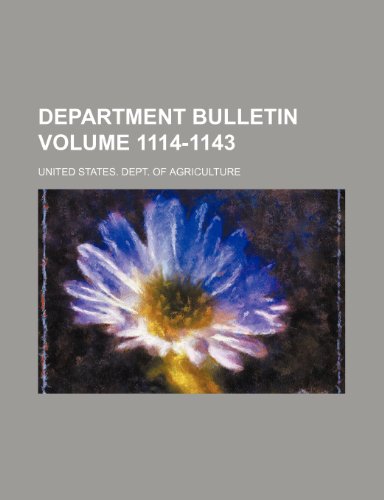Artículos relacionados a Department bulletin Volume 1114-1143

Reseña del editor:
This historic book may have numerous typos and missing text. Purchasers can download a free scanned copy of the original book (without typos) from the publisher. Not indexed. Not illustrated. 1922 Excerpt: ... birch and yellow birch are subject to a white heart-rot (32) which, although very similar to the foregoing, is caused by a different fungus, the false tinder fungus (Fomes igniarius (L.) Gill.). The first indication of the incipient decay is a brown discoloration, not very apparent against the reddish brown heartwood. Next, faintly paler streaks or spots appear, which finally become a yellowish white, strikingly apparent against the dark background. This stage is illustrated by Plate VII. In the center of these streaks small spots are found in which the yellowish white wood appears to have collapsed. Usually the long axis of these spots is parallel to the grain, but in some it may be at right angles to it. The wood up to this time appears firm and hard. Next the white streaks merge, the wood becomes soft, and finally the entire affected portion of the heartwood is reduced to a yellowish white fibrous mass composed principally of cellulose, the result of the delignification by the fungous hyphse. As in the white-rot of ash, hyphse are not found in the brown discoloration. Hence, no reduction in the strength of the wood may be expected until the very first indications of the whitish streaks or spot, which may be found as much as 8 feet in advance of the typical decay. One of the most common decays (#4) on oaks and also on certain poplars (Populus) is the heart-rot caused by the oak fundus (Polyporus dri/opkih/s Berk.). The incipient decay of this whitish piped rot in white oak has a water-soaked appearance in the unseasoned wood, but when dry the discoloration becomes hazel to tawny in color. The discoloration may extend from 1 to 10 feet in advance of any other indication of the decay. The next stape of the decay, which is best seen on a radial face, is chn...
"Sobre este título" puede pertenecer a otra edición de este libro.
- EditorialRareBooksClub.com
- Año de publicación2012
- ISBN 10 1236460731
- ISBN 13 9781236460738
- EncuadernaciónTapa blanda
- Número de páginas308
(Ningún ejemplar disponible)
Buscar: Crear una peticiónSi conoce el autor y el título del libro pero no lo encuentra en IberLibro, nosotros podemos buscarlo por usted e informarle por e-mail en cuanto el libro esté disponible en nuestras páginas web.
Crear una petición